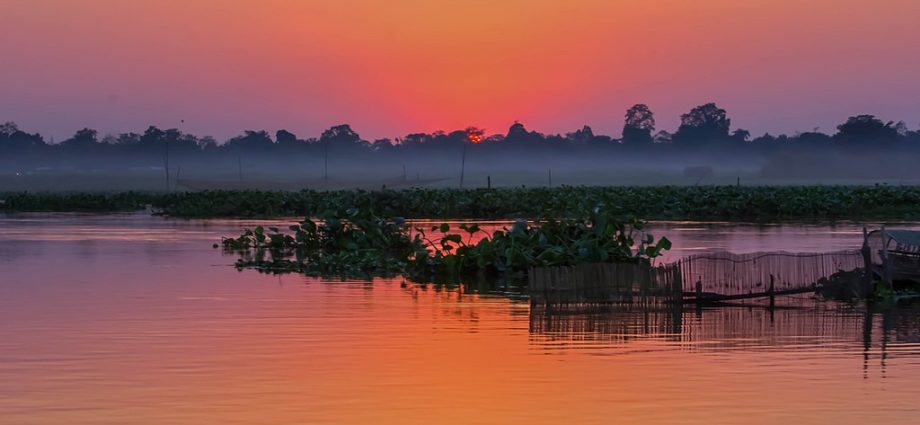Located in the Tinsukia District of Assam, the Maguri Beel is a freshwater lake on the border of the Dibru Saikhowa National Park. This wetland is home to a variety of aquatic, terrestrial and avian species. Due to a recent incident, a huge amount of crude oil leaked into the lake. This is causing tremendous harm to the ecology of the wetland.
Maguri, the name has originated from the name of the fish Magur (Clarias batrachus), once found plenty in the wetland. In the Easternmost part of the Assam, two rivers – the Dibru and the Lohit meets the Brahmaputra and flows through Assam to reach the Bay of Bengal. At this very junction lies a beautiful land rich with Biodiversity, named as Dibru Saikhowa National Park. To its south, exists a vast expanse of swamps and marshes interspersed with sandy islands.
Maguri beel is a natural lake adjacent to the National Park, which receives water from the Brahmaputra during the monsoon. The Maguri beel is a fertile breeding ground for various fishes and heaven for winter migrating birds. According to the records submitted to ebird.org, Maguri beel harbors around 309 species of birds. There are around 48 species of fish found in the wetland (as per the report by Pollobi Kalita and team). The areas around the wetland also has a beautiful patch of swampy grassland. It is also the home for various globally threatened birds.
The recent oil well explosion on 27th may at Baghjan production well, near to this wetland, under Baghjan Oil field of Oil India Limited at Tinsukia. And it has created massive environmental havoc to this biodiversity-rich area. The explosion has lead to the evacuation of hundreds of people and livestock around the area of the explosion. The explosion resulted in the release of gases and oil into the air, which later fell as droplets on the ground and water surfaces. The greasy layers of oil on vegetation, eventually killing the plants, creating a massive loss to agriculture and other lives.
Oil spillage to the nearest wetlands has resulted in water surface pollution. The oil on water surface made the underneath suffocating to fishes and vegetation and killed thousands of fishes vegetation under and above. There are several carcasses of endangered South Asian River Dolphin found lying in the waters of the wetland. The grassland near to the marsh are seen dying due to the oil layer on the leaves.
As per government notifications, it is prohibited to do any kind of developmental activity within the radius of 10 km from a protected areas. These are known as Eco Sensitive Zone (ESZ). With such prohibition, how these oil fields are operating in the ESZ of Dibru Saikhowa National Park. As per some news reports, the exploded oil well was outsourced for welling to some private agencies by Oil India Limited. Negligence towards the mandatory safety measures may be one of the reason behind such an explosion. And this caused a loss irreplaceable.
This Article was Contibuted by Nilutpal Mahanta. Working as a wildlife activist and photographer, he is currently pursuing his PhD in Zoology from Guwahati University.



